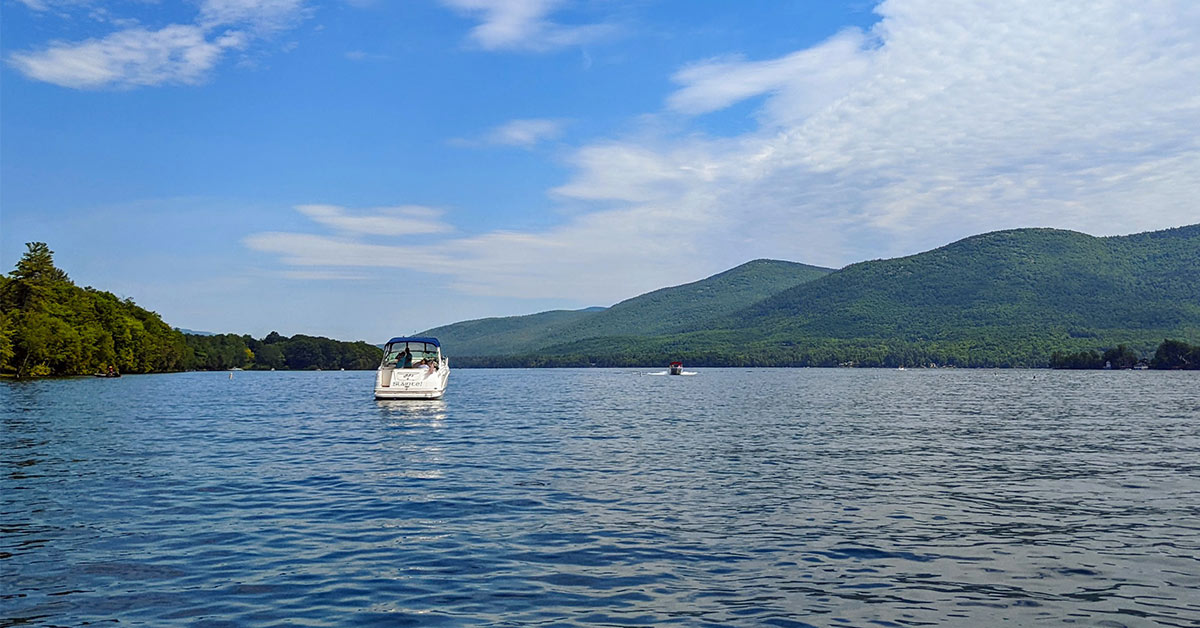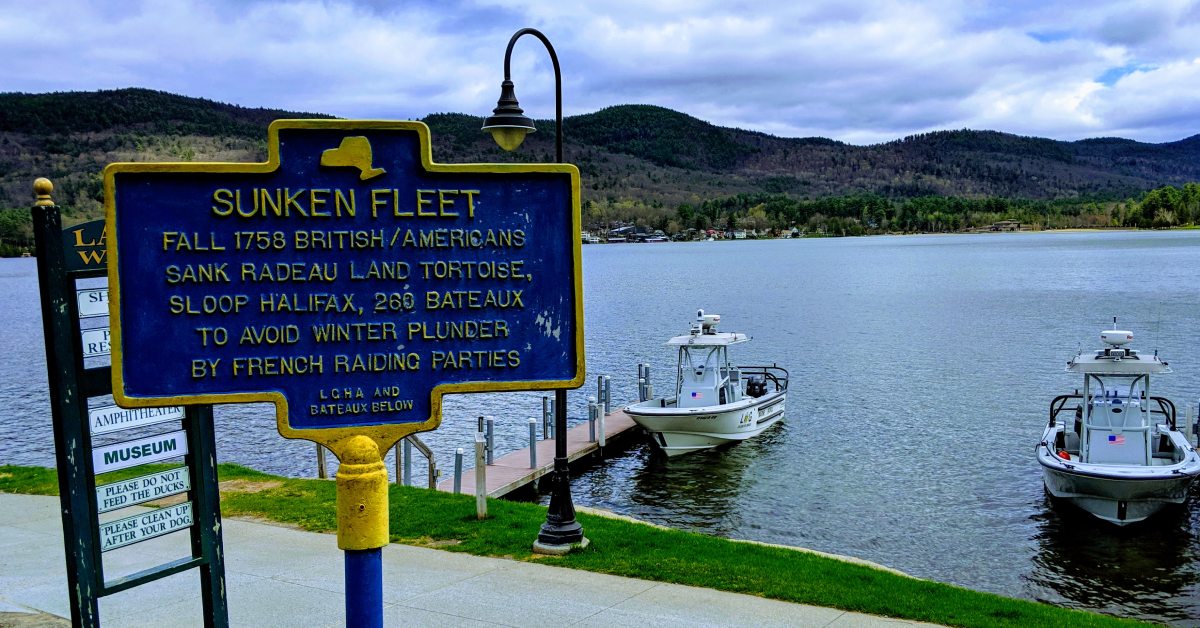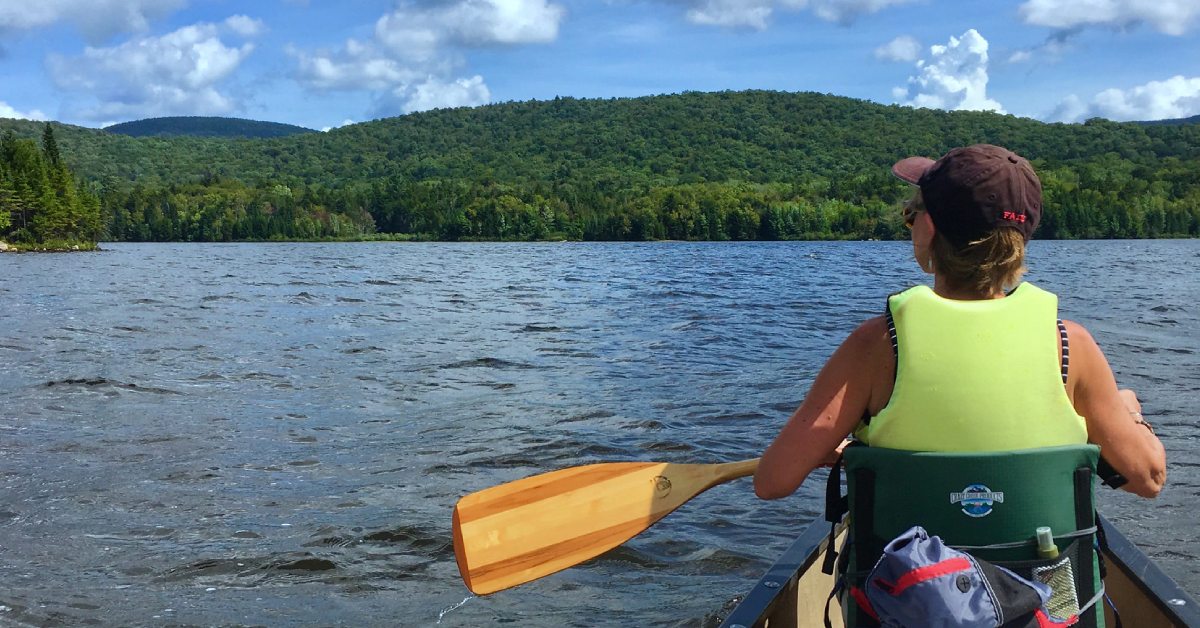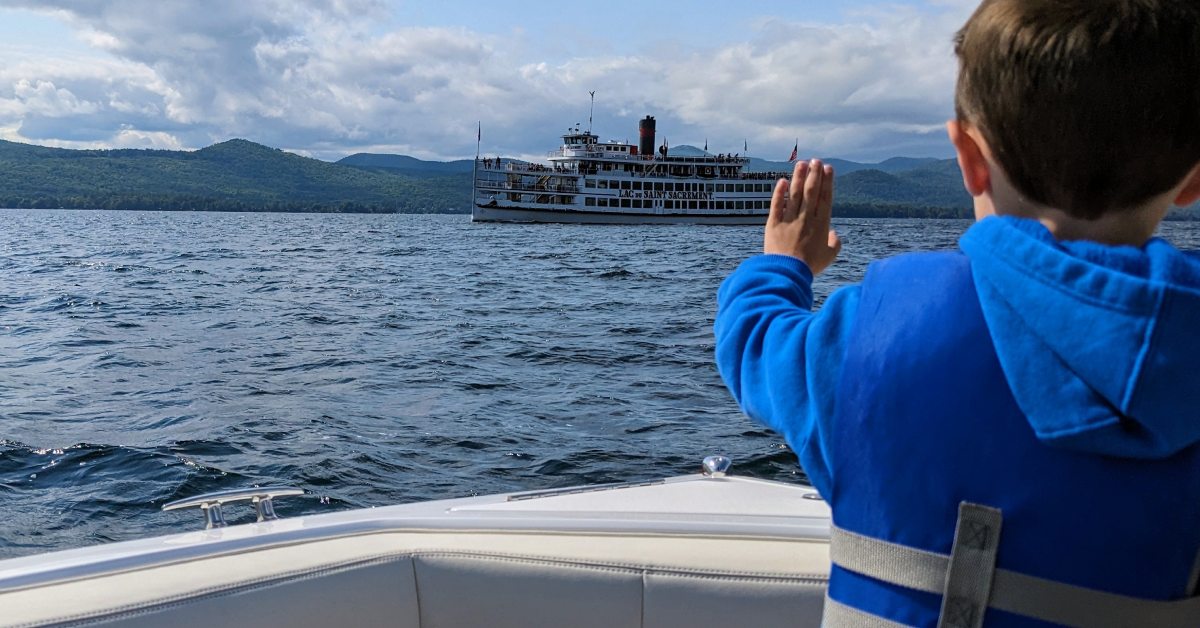12 Boating Safety Tips for Lake George
Boating on Lake George can't be beat. There are so many ways to have fun on the water, but safety always comes first! See 12 key boating safety tips for Lake George below, courtesy of the Lake George Association.

In recent years, Lake George has seen a dramatic increase in the use of small craft - canoes, kayaks, small sailboats and personal watercraft, making being careful even more important.
12 Tips for Lake George Boating Safety

1) Take a boating safety course.
These 8-hour courses are offered regularly throughout the boating season by the Lake George Power Squadron, the Eastern NY Marine Trades Association, and the Lake George Park Commission.
They're jam packed with professional instruction on how to keep everyone safe while boating on Lake George.

2) Know the location of submerged objects.
Watch for and understand navigational markers! Carry a chart or map of the Lake - (they are available for purchase at the LGA, the Lake George Park Commission and at many marinas).

3) Pay attention to wakes.
Know how to navigate them, and be responsible for those you create.

4) Always check the weather first.
Due to the high mountains surrounding Lake George, boaters cannot always see storms coming. Before setting out, check the radar.
Don't go out in fog, thunderstorms, or anytime when the waves are rolling and the wind is whipping, as visibility is at a minimum during those time.

5) Vision is key.
Motorboat operators should look over the top of the windshield (not through it). Know what is in front of you, on your sides, and behind you, at all times.
Keep the bow of the boat low - you should always be able to see clearly ahead.
Assign a designated lookout to keep an eye out for other boaters, objects, especially small craft and swimmers.

6) No drugs or alcohol.
Never use drugs or alcohol before or during boat operation. Alcohol's effects are greatly exaggerated by exposure to sun, glare, wind, noise, and vibration.
Boating Under the Influence is dangerous and illegal.

7) Wear a comfortable, lightweight PFD (personal floatation device).
Too often PFDs are left behind or not worn because they are uncomfortable, especially by paddlers.
Lightweight, comfortable, high-waisted and affordable life jackets are available; designed especially for kayakers, they allow full freedom of movement.

8) Motorboats: Think center. Paddlers: Think edges.
Motorboats on Lake George can enjoy considerably more elbow-room when they travel in the center of the Lake, yet they rarely do!
There's considerably less traffic in the middle, and the water is often smoother because of that.
Paddlers should cruise close to shore whenever possible.

9) Bright colors for paddlers. Place a kayak safety flag (similar to a bike flag) on your vessel.
Purchase a hat and PFD with contrasting day-glow colors. Use reflective tape on your paddles.
10) Be ready to signal using a handheld horn.
Paddlers and small sailboats can carry an electronic handheld signaling device or a horn with compressed air - these can make a powerful noise when you need them to!

11) Communicate.
Always let someone on shore know where you are going and when you'll be back. Keep an old, discarded cell phone on board your boat - you can still use it to call 911.

12) Know and follow the "rules of the road."
Motorized craft must give right of way to non-motorized craft, and boats being passed have the right of way.
The speed limit on Lake George is 45 mph from 6 am - 9 pm, 25 mph from 9 pm - 6 am, and 5 mph in no wake zones and within 100 feet of docks, moorings, anchored vessels and shore (500 feet for PWCs).
See more on the Rules & Regulations >>
